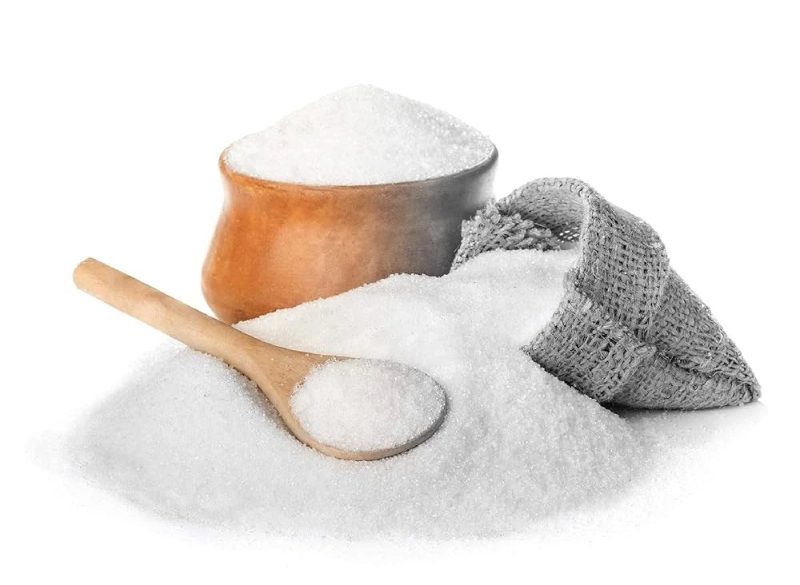Views: 222 Author: Sara Publish Time: 2025-11-25 Origin: Site








Content Menu
● Properties and Benefits of Erythritol
● Industrial Production and Fermentation Process
● Applications in Food, Beverage, and Healthcare
● Safety and Regulatory Approvals
● Frequently Asked Questions (FAQ)
>> 1. What is erythritol and where does it come from?
>> 2. How sweet is erythritol compared to sugar?
>> 3. Does erythritol affect blood sugar or insulin levels?
>> 4. Is erythritol safe for consumption?
>> 5. Can erythritol prevent tooth decay?
Erythritol is a natural sweetener classified as a sugar alcohol or polyol that occurs naturally in small amounts in various fruits and vegetables. It provides about 70% of the sweetness of sucrose (table sugar) but with almost zero calories. Erythritol is widely used as a low-calorie sweetening agent due to its ability to provide sweetness and bulk without causing tooth decay or raising blood sugar levels. Although it is naturally found, the commercial production of erythritol typically involves fermenting glucose derived from natural starches such as corn or wheat, using specific yeast strains like Moniliella pollinis. This results in a pure crystalline product that is approved for food and beverage applications globally.[3][8][9][10]

Erythritol offers several benefits as a natural sweetener. It has a clean, sweet taste with no bitter aftertaste, which differentiates it from many artificial sweeteners. One of the key advantages of erythritol is its near-zero glycemic index, meaning it does not significantly affect blood glucose or insulin levels, making it safe for diabetics and those controlling blood sugar. It also has excellent digestive tolerance compared to other sugar alcohols, as most of it is absorbed in the small intestine and excreted unchanged via urine, minimizing the laxative effect common with polyols. Erythritol is more stable in acidic and heat conditions compared to many natural sweeteners, allowing it to be used in baked goods, beverages, and dietary supplements with retained sweetness and functionality.[8][9][11]
The commercial production of erythritol is a sophisticated fermentation process that starts with extracting glucose from starch sources, most commonly corn. The glucose solution is fermented using specific yeasts like Moniliella pollinis under optimized conditions of pH, osmotic pressure, and nutrient balance. Factors such as the carbon-to-nitrogen ratio in the fermentation medium, salt concentration (NaCl), and mode of fermentation (batch vs. fed-batch) significantly impact erythritol yield and productivity. For example, a fed-batch fermentation system gradually adds nutrients, improving yields up to approximately 26 grams per liter with optimized pH around 5 and NaCl concentration near 25 g/L to induce optimal osmotic stress for enhanced erythritol synthesis. These finely tuned parameters ensure a high-quality product with higher production efficiency for industrial applications.[1][2][3]
Erythritol is widely incorporated in sugar-free and reduced-sugar food formulations, including baked goods, confections, beverages, and dietary supplements. It is often combined with intense natural sweeteners like stevia or monk fruit extract to achieve sweetness profiles closely mimicking sugar. Its zero-calorie nature and compatibility with diabetic diets have driven its popularity in healthcare and wellness products. Furthermore, erythritol's tooth-friendly properties mean it is employed in dental care products such as toothpastes and chewing gums. Its functional role extends beyond sweetness, providing bulk and texture that are critical in tablet production and mouthfeel enhancement in various consumables.[9][11][8]

Erythritol is generally recognized as safe (GRAS) by major food safety regulatory authorities worldwide, including the FDA and EFSA. Extensive studies support its good safety profile, showing no carcinogenic or genotoxic effects. It is well tolerated by most consumers, with minimal digestive side effects when consumed in typical amounts. Due to its non-fermentable nature by oral bacteria, erythritol does not promote cavities, making it an attractive ingredient for oral health. As consumer demand grows for natural, low-calorie sweeteners, erythritol continues to be embraced as a sustainable and health-conscious sugar alternative.[11][12][9]
Erythritol stands out as a naturally derived, low-calorie sweetener with a clean, sweet taste and beneficial properties for metabolic health and dental care. Its commercial production through fermentation from natural starch sources aligns with the rising demand for clean-label, natural ingredients in food, beverage, and healthcare industries. Optimized fermentation processes ensure high-quality erythritol that performs well in a variety of applications, providing sweetness with minimal caloric impact and health concerns. As consumer awareness grows around sugar reduction, erythritol's role is increasingly vital in the development of modern health-conscious products.

Erythritol is a sugar alcohol naturally present in fruits like pears and melons; commercially, it is produced by fermenting glucose derived from plant starches such as corn or wheat using specialized yeasts.
It has approximately 70% of the sweetness of table sugar but contains almost no calories.
No, erythritol has a negligible glycemic index and does not raise blood glucose or insulin, making it suitable for diabetics.
Yes, it is approved by global food safety authorities and generally causes fewer digestive issues than other sugar alcohols.
Yes, erythritol is non-cariogenic and may help reduce dental plaque formation, supporting oral health in sugar-free products.
[1](https://pmc.ncbi.nlm.nih.gov/articles/PMC11750574/)
[2](https://www.frontierspartnerships.org/journals/acta-biochimica-polonica/articles/10.3389/abp.2024.14000/full)
[3](https://elchemy.com/blogs/chemical-market/what-is-erythritol-made-from-a-look-at-its-sources-and-production-process)
[4](https://www.sciencedirect.com/science/article/pii/S0960852415012766)
[5](https://www.tandfonline.com/doi/full/10.1080/07388551.2017.1380598)
[6](https://journals.asm.org/doi/10.1128/aem.01565-25)
[7](https://en.wikipedia.org/wiki/Erythritol)
[8](https://www.sciencedirect.com/topics/agricultural-and-biological-sciences/erythritol)
[9](https://www.truvia.com/why-truvia/erythritol)
[10](https://www.acs.org/molecule-of-the-week/archive/e/erythritol.html)
[11](https://www.health.com/erythritol-benefits-7549663)
[12](https://www.healthline.com/nutrition/erythritol)
